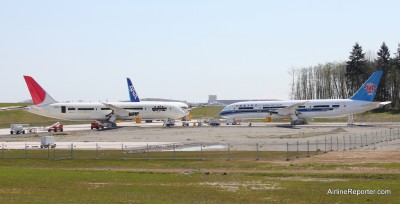
Boeing 787 Dreamliners for ANA, JAL and China Southern sit waiting for parts at Paine Field.
The Boeing 787 Dreamliner is about to start a new round of testing to prepare for its first customer, All Nippon Airways (ANA), during the third quarter of 2011. During the week of July 4th, the second Dreamliner, ZA002 is expected to start service readiness testing in Japan.
Both companies will help to simulate in-service operations at several airports throughout Japan. ANA’s maintenance crews will also have the ability to service the 787 during the testing, including fit checks for airplane jacks, towing and refueling the aircraft. The testing is expected to take place during the week of July 4th. This will also mark the first time that the 787 has flown to and with-in Japan.
At this point, ANA is expecting their first 787 Dreamliner sometime between August and September. Boeing is not officially talking about who will receive the next few 787s. However, Boeing President Jim McNerney announced that China Southern should receive their first Dreamliner during the fourth quarter this year.
Japan Airlines (JAL) has recently announced they will operate the Boeing 787 Dreamliner on a route from Narita Japan to Boston, starting in April 2012, but a JAL spokes person confirmed to me via email that this will not be the first 787 they will receive. “The first 787 will not be on the [Tokyo to Boston] route, but this route is the first one named by JAL to use the 787.” The spokesperson explained. “We haven’t announced where the first 787 will be deployed to.” JAL hopes to receive their first 787 by the end of 2011 and receive five Dreamliners by the end of the 2011 fiscal year.
It is not exactly clear if China Southern or JAL will receive the second 787, but this timeline suggests that ANA will not be flying the 787 exclusively for very long. With ANA’s pride in being the first customer for the 787 and all their advertising featuring the aircraft and even operating a site dedicated to the aircraft called “ANA We Fly 1st,” I can only imagine that the airline was hoping to be the only airline flying the Dreamliner for a bit longer than a few months at most.
-
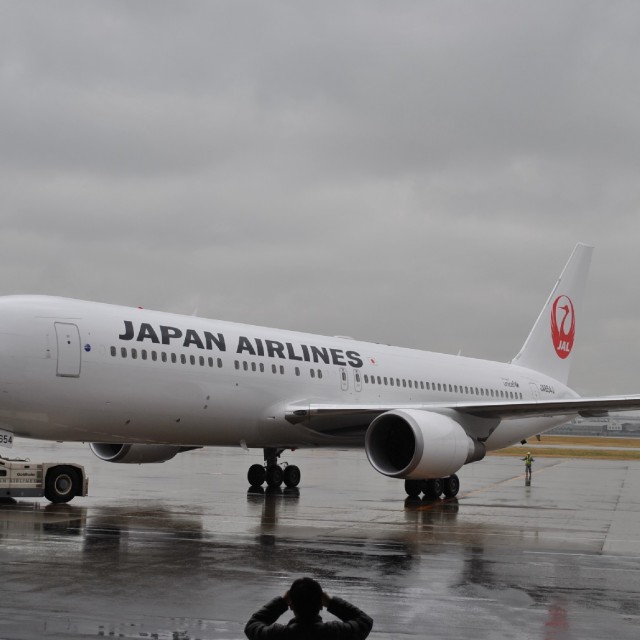
-
The new JAL crane livery outside.
-
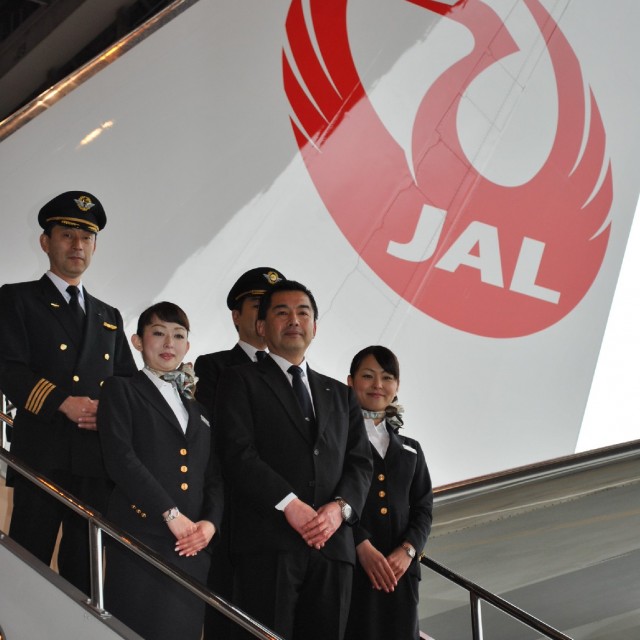
-
New crane livery with JAL President and crew
-
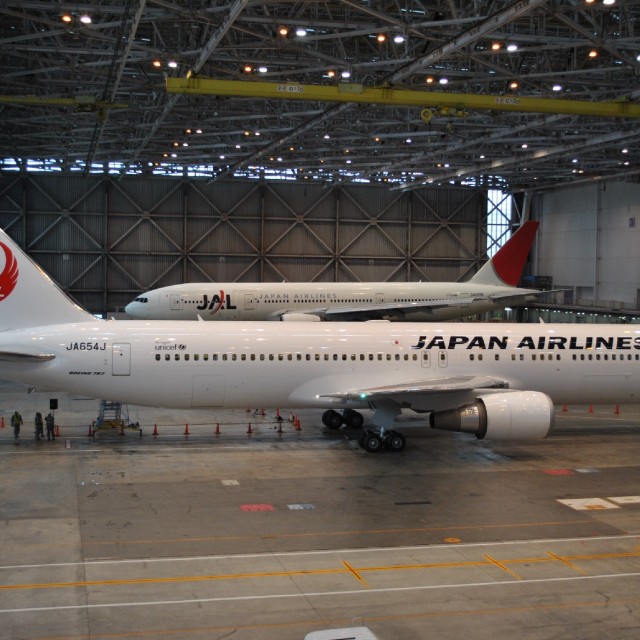
-
A Boeing 777-200 (JA0090) sits in the hangar with the Boeing 767 (JA654J)
-
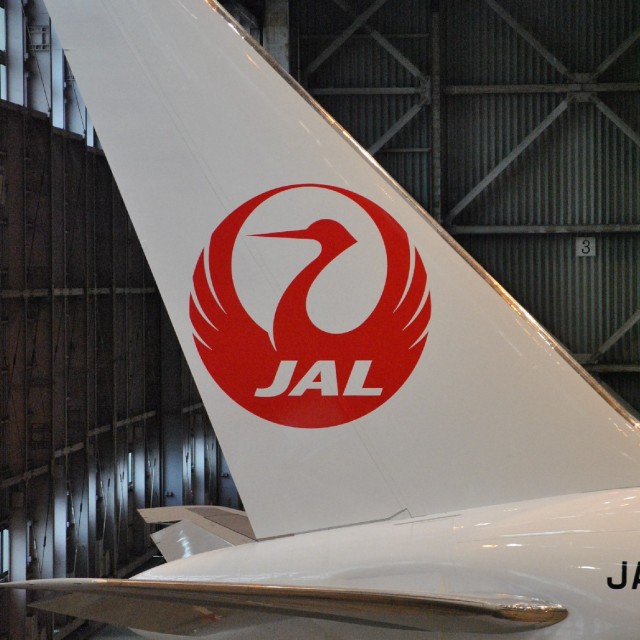
-
Tail of Boeing 767-300ER with crane livery
-
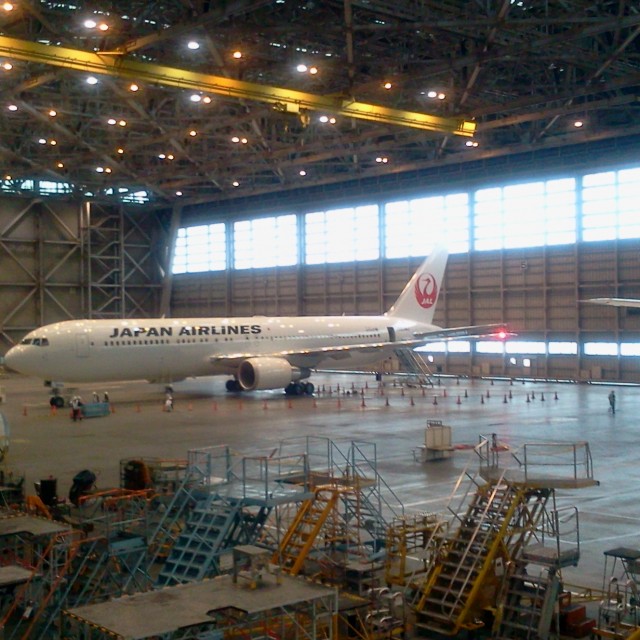
-
Japan Air Line’s new livery on a Boeing 767-300ER. Photo from JAL.
-
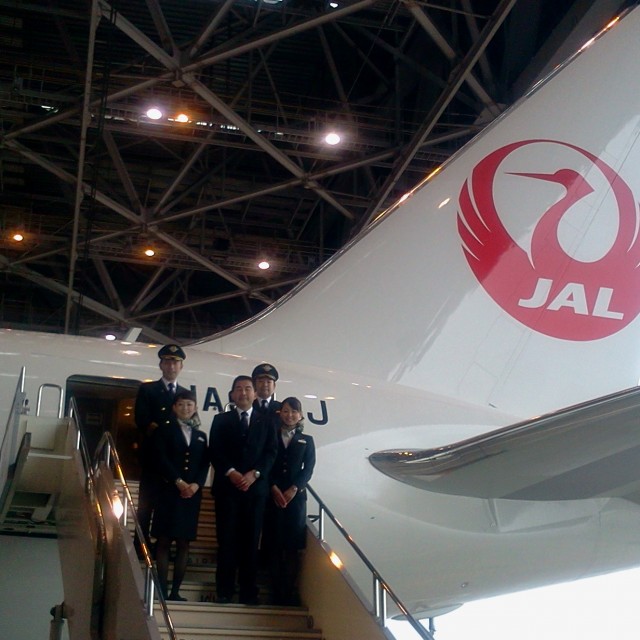
-
Cabin crew check out the new Boeing 767 with crane livery.
Japan Air Lines (JAL) has officially unveiled their new crane livery on a Boeing 767-300ER (JA654J) in Tokyo. The plane was flown, unpainted, from Paine Field to JAL’s maintenance center in Tokyo where it was painted in the new livery. The resurrection of the crane is to match the airline’s, “new philosophy and corporate policy which underscore the company’s re-commitment to provide the highest levels of service to customers and to raise its corporate value in order to contribute to the advancement of society.”
The new aircraft will start flying between Haneda and Beijing on March 2, 2011. Before then, it will be flown on a domestic flight between Haneda and Kushiro where Japanese red crowned cranes hang out during the winter.
When I first got a glimpse of the computer generated livery I thought it looked much too plain. In photos I think it looks much better, clean and classy, which I think they are going for. In a time where airline liveries are getting more and more complicated, the simplicity of JALs new crane livery is a nice change. However, I think it is missing something. A swooping cheat-line would really make this livery look complete. What do you think?
Updated: Now sharing six photos, all from JAL.
Here are some other photos:
* Photo of the plane being towed on Airliners.net
* A mock up of the livery on a Boeing 787 Dreamliner
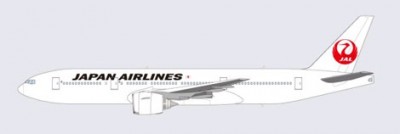
Really? This is the best they can do? So much white and a little too simple for my tastes. This is JAL's next livery.
This new livery from Japan Airlines (JAL) is a bit of a shocker to me. Earlier in the week, I started to see people talking on the web about JAL changing their livery and adding the historic crane back. I have actually like JAL’s current livery and was surprised to see them announcing a new one already. Then I started to see the drawings of what the new livery was supposed to look like.
At first I thought, “no way, what person did this mock up and showing it around the web?” It almost looked like someone made a custom livery on their home computer. So, I headed to the source and JAL’s press page. Holy smokes, they have the same mock up of the new livery. I am a little shocked that the mock up isn’t a little more professionally done, but I guess at least it gives us a good idea what it will look like.
At first I thought this livery was a horrid idea. Going from a pretty trendy looking livery with a nice cream-colored base to bleach white with just a crane and black titles. After some time looking at it, I don’t know what to think — I might have to wait until seeing it in person. It seems like it is very, very plain, but it might have a good enough retro feel to work. I think a clean red cheat-line might have brought it all together with a little update to the crane.
It seems a little odd to me that the company would be spending so much on a re-branding during a financially difficult time, but they are hoping it to celebrate the changes. The new livery will first be seen on a Boeing 767-300ER and I will for sure be looking for her in person to see how it turns out.

The good old airline spork.
Weight equals money and when a fully loaded Airbus A380 can weigh over a million pounds, airlines don’t want to be adding any unnecessary weight. The airline industry has become very creative with adding new fees to bring in additional revenue, but they are also looking at creative ways to lessen weight and save money.
Northwest Airlines (err, I guess Delta) is now cutting spoons on their flights to help save weight. Sure one little spoon might not seem to make a big difference, but a Northwest Boeing 747-400 holds more than 400 people — that’s a lot of spoons (why don’t they just bring back the spork?)
They aren’t the only airline considering utensil overhaul. Japan Airlines has decreased the size of their cutlery (which not only saves money in weight, but for purchase price of the actual product). Other airlines are cleaning their planes more (dust = weight), not supplying magazines and carrying less water on board.
I am sure this concept will catch on. From cutting pillows, to the type of fabric being used in seats, to having less gadgets (boo), to maybe even someday accounting for passengers’ weights (hopefully not, but RyanAir might be crazy enough), the airlines will probably continue to look for cost-cutting measures, especially as they move toward better fuel-efficiency.
Source: Seattle PI Image: Ethan Hurd

Test Pilot Captain Keith Pattie, right, Air New Zealand's Chief Pilot Captain David Morgan, left, pose with the company's CEO , Rob Fyfe before their test of a Bio Fuel mixture in the left hand engine of Boeing 747 in Auckland, New Zealand
Back in late 2008 I talked about how Boeing was working with Continental Airlines on an algae-based bio fuel.
On Thursday Bill Blover, managing director of environmental strategy for Boeing Commercial Planes stated the new fuel could be approved and in commercial flights as early as early 2010. He states the technology is ready, but there isn’t enough plant stock yet to create enough fuel.
The New York Times reportsthat Boeing has been working with four airlines on four different fuel mixtures, “Virgin Atlantic flight using a coconut- and babassu-derived biofuel blend; an Air New Zealand flight using a jatropha-derived biofuel blend; a Continental Airlines flight using a blend of algae- and jatropha-derived biofuel; and a Japan Airlines flight using an algae-, jatropha- and camelina-derived biofuel blend.”
Air New Zealand showed a 1% improvement in fuel efficiency which might not sound like a lot, but a large jet burning fuel on a 12 hour flight, equates to about a savings of 1.43 metric tons of fuel and 4.5 metric tons of reduced carbon dioxide. Multiply that by the amount of flights going on globally on any given day, and that ads up to a lot of savings.
Even though we might start seeing some new biofuel in some jets starting in early 2010, they will still have to fight production ability and being cost effective compared to jet fuel and if the economy is down, it is most likely airlines won’t be willing to pay a premium for green fuel.
Image: AP Photo/NZ Herald, Paul Estcourt









